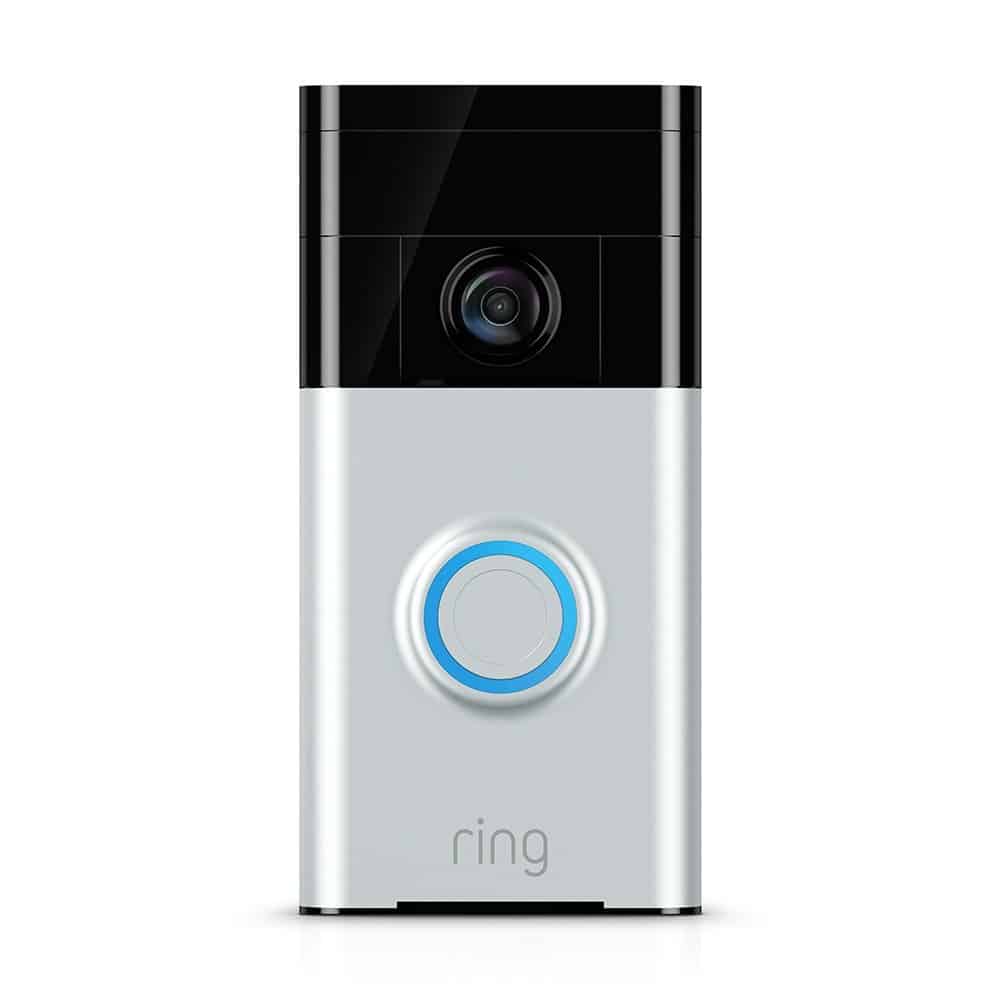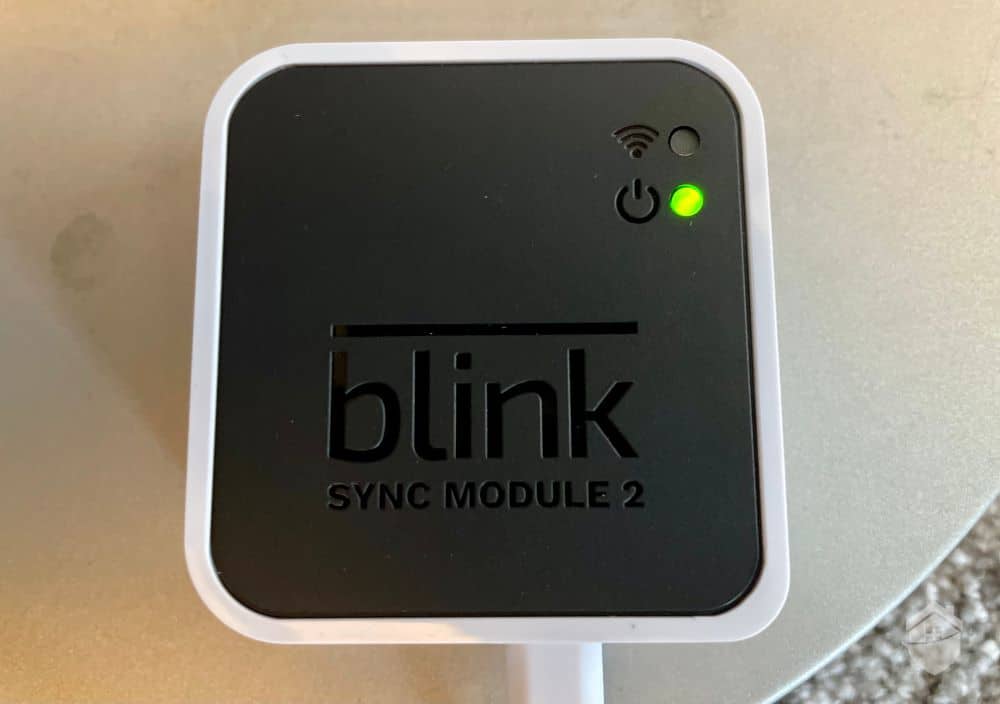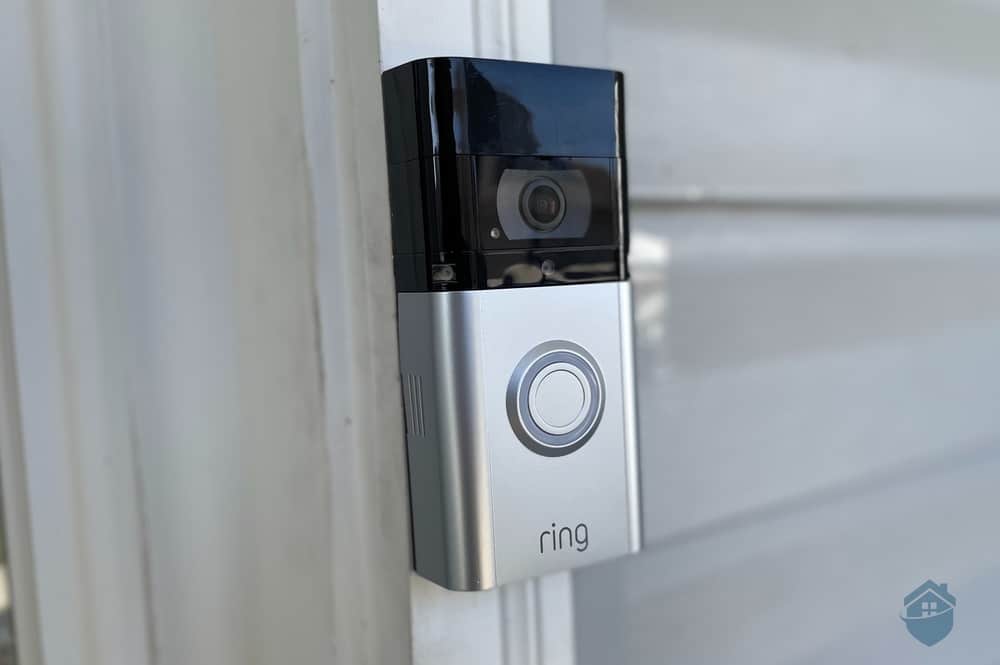Why Choose Ring Video Doorbells?
When it comes to video doorbells, you might call Ring an overachiever. After all, this is the company that invented doorbell cameras. It doesn’t come as a surprise that they have ten different models. Most home security companies – ADT, SimpliSafe, even Vivint – offer one or two at most. That’s why we decided to compare Ring’s two most popular models.
Before we get into it, a bit of explanation about how Ring labels its products is in order, just to keep things straight as we go.
First, Ring offers three doorbell tiers, each one identified by its suffix (or lack thereof, as the case may be).
- The Ring (no suffix) is the entry-level version of the doorbell.
- The Ring Plus is the mid-tier version.
- The Ring Pro is the flagship version.
You should also know that each of these versions comes in a choice of wired or battery-powered. Don’t worry, there’s not much difference between wired and battery-powered in terms of features, and when it’s relevant, we make sure to let you know. For now, though, let’s call the no-suffix version the Ring and the Plus version the Ring Plus.
Now that’s sorted – onward!
Ring Vs. Ring Plus: The Basics
It’s pretty simple to bottom-line these two devices. As you would expect, the Ring Plus comes with more features than the Ring. It also comes with a higher price tag.
There’s a lot that goes into the bottom line, though. For instance, just what extra features do you get if you’re willing to pay the Ring’s Plus’s higher price? Are those features worth the money? And just what is the Ring missing exactly? Sure, you’re saving, but will the Ring keep you safe? If you want answers to those questions, we’re going to have to dig a little deeper.
FYI: Going beyond the Ring Video Doorbell Plus, the Pro models feature an improved 3D motion detection. It uses radar technology for more accurate detection. This also allows for a birds-eye view that you can use to track someone’s movement across your property.
Ring vs Ring Plus: Features and Similarities
The Ring Plus definitely packs more features and technologies than the Ring, but you might be surprised by how much they share in common.
Reliability and Durability
Both Ring and Ring Plus proved durable during testing. Neither experienced glitches, and both withstood winter atoms and heavy spring rain. We had no problem with Wi-Fi disconnections either; we just had to make sure they were getting strong signals from our Wi-Fi router.
Choice of Models
Both cameras come in wired and wireless versions. We found the wireless versions easier to set up, as they run on batteries. That said, if you have existing doorbell wires, we recommend the wired version. They snap right into place and integrate seamlessly into most wired setups. Wired also means you don't have to remember to charge the battery.
DIY installation
Both are simple to install. Wireless models need only a few screws, and wired models require basic wiring. Using the Ring app’s step-by-step instructions, we installed our video doorbells in about 40 minutes.
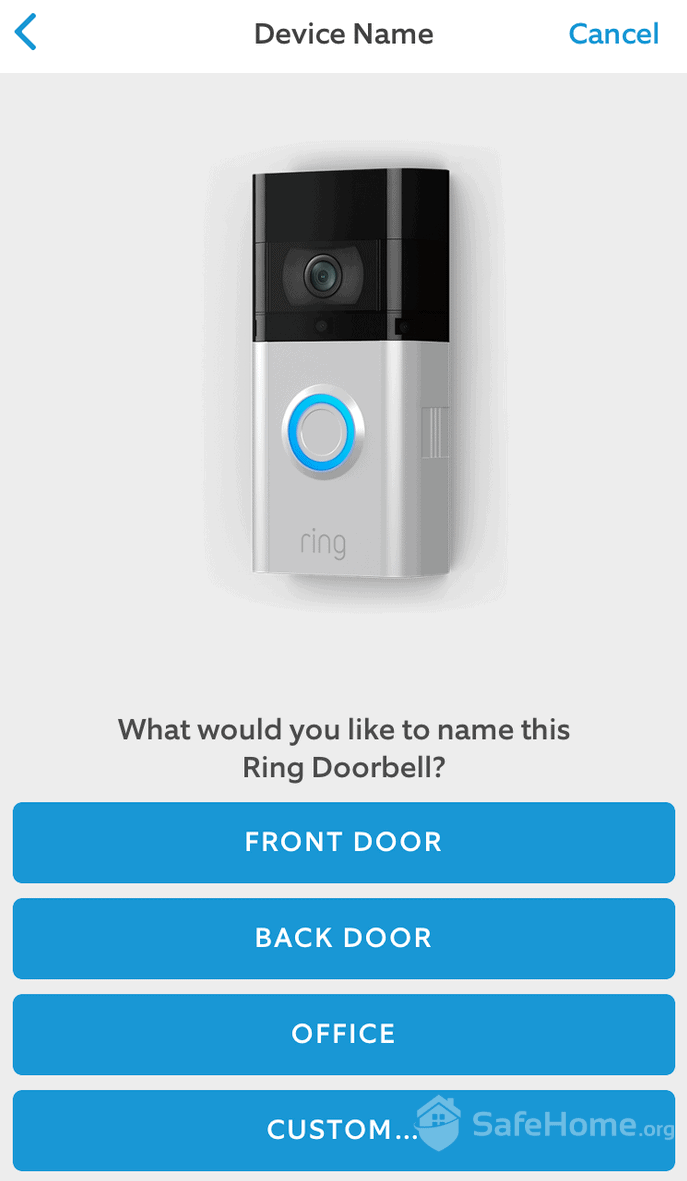
The Ring – Always Home app has detailed instructions on how to install video doorbells.
Motion Detection
Most security cameras use motion detection to trigger alerts and video recording, but the intelligence of the device differs. Both the Ring and the Ring Plus include custom sensitivity settings and detection zones. This helps reduce false alarms. The Wired Doorbell Plus takes things a step further with the new 3D motion detection feature that uses radar technology for even more accurate allerts.
App Integration
All of Ring’s products use the same Ring – Always Home app, which we’re fans of. It offers all the functionality we look for like customizable notifications, sensitivity settings, and a simple event history with a user-friendly interface. We also like how the app receives regular updates. During our testing period, we received updates every other week. That ensured any bugs were resolved quickly.
Did You Know? You can stream video from your doorbell no matter where you are as long as you have an internet connection. We’ve watched packages get delivered while we were on vacation hundreds of miles away.
High-Quality Video
Ring and Ring Pro both offer high-quality video feeds. While Ring’s latest generation of doorbell cameras feature 2K or 4K resolution, the 1080p HD offered by these video doorbells delivers crystal-clear images. Their HDR support provides better contrast in challenging lighting conditions, minimizing the negative impacts of glare.
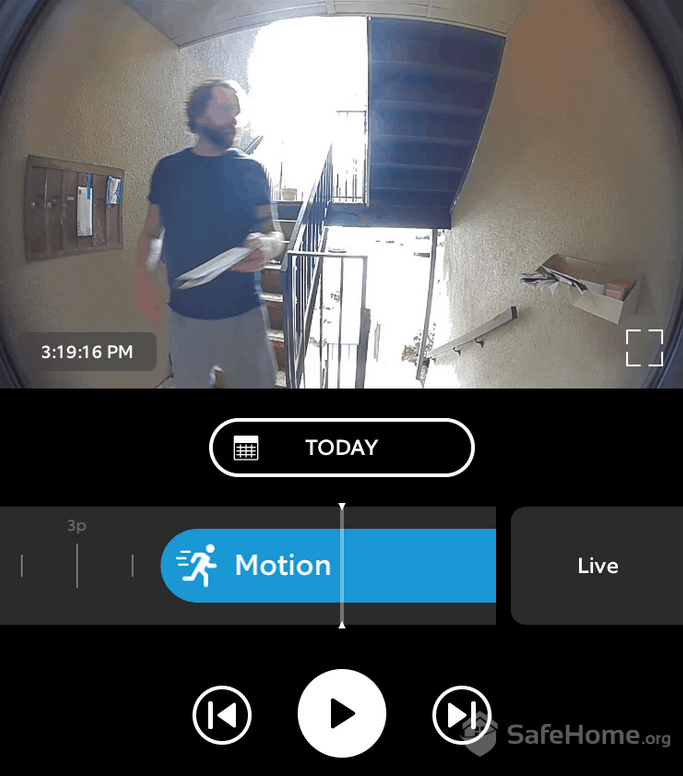
The image quality from our Ring Doorbell met our requirements.
Field of View
Both cameras offer a wide field-of-view so you can be certain you won’t miss any potential threats. They each feature a 150-degree horizontal and 150-degree vertical viewing angle for complete head-to-toe coverage.
Night Vision
Whether you’re looking to catch midnight porch pirates or welcome guests over for an evening soiree, both video doorbells include color night vision that closely matches their daytime video quality.
Two-Way Communication
Ring’s two-way communication for both video doorbells allowed us to speak with visitors at the door using nothing but our smartphone. The latest generation of Ring video doorbells feature audio noise cancellation which keeps conversations clear even in windy conditions.
No Local Recording
Ring cameras don’t come with local storage options. It's one of the advantages Lorex has over Ring. DVR/ NVR and SD card options mean free Lorex recordings. Recording footage on our Ring doorbell requires a subscription to their cloud storage plan, starting at $4.99 per month or $49.99 per year.
Did You Know? Ring cloud storage plans store video clips for up to 180-days. Most competitors retain clips for a maximum of 30 days. The premium plan also comes with unique features like cellular backup in case your Wi-Fi goes down.
Lighting
Neither Ring Video Doorbell offers a built-in LED light, despite both offering color night vision. The color night vision relies on ambient light, like nearby streetlights or hallway lighting. The Ring Spotlight Cam and Ring Floodlight Cam both require built-in lights to power its color night vision.
Smart Alerts
Although it requires a Ring Home subscription, both the Ring Video Doorbell and Ring Video Doorbell Plus offer smart alerts. That means Ring will tell you if it detected a person, pet, or package at your front door, rather than only detecting motion.
Price Range
Even though the Ring Video Doorbell Plus costs a bit more, we still find that both models offer great bang for your buck compared to other video doorbells. For example, the Ring Plus costs $149.99, whereas Google's Nest Doorbell (battery) costs $179.99.
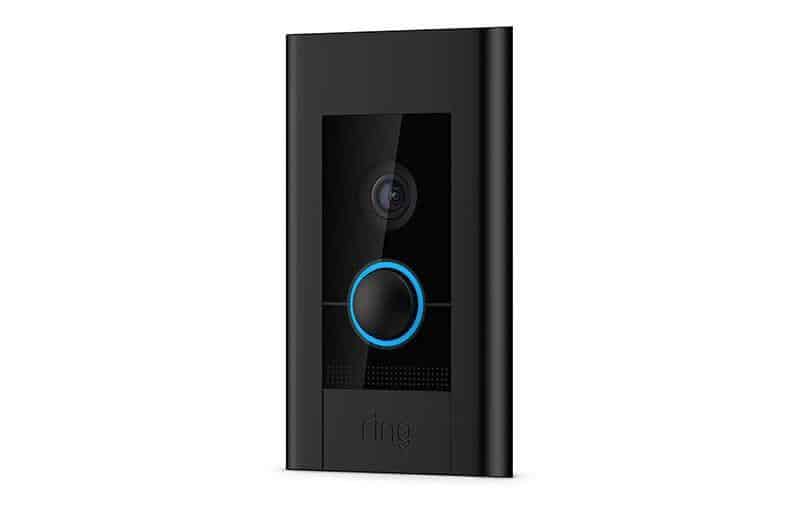
We prefer the black Ring Doorbell Pro because it doesn’t stand out at night like the silver version.
Differences Between Ring and Ring Plus
We don’t want to give you the impression that the Ring and Ring Plus are identical. There are several differences that will help you decide which one is best for you.
Size
Larger video doorbells have their advantages. Studies show that surveillance cameras are an effective crime The Ring Video Doorbell’s size ensures criminals know they’re being watched. It can take away from the clean look of your home, though.
Battery Charging
If you opt for the battery version of the Ring Video Doorbell, note that the battery is not removable. You need to plug the doorbell into an outlet via a USB-C cable. The Doorbell Plus has a removable battery, so you can bring it inside when it needs to be charged. Ring also sells extra battery packs for $34.99, so you can keep a spare charged to swap in and avoid downtime.

We like that the Ring Video Doorbell is smaller, but we wish we could remove the battery when it needs charging.
Motion Sensor
Both doorbells use the same advanced motion detection system with customizable motion zones. In our testing, we found that the Plus offers more accurate motion detection. The latest Wired Plus model features 3D Motion Detection with bird's eye view zones, allowing you to set detection distances between five and 30 feet from your door.
Wired Version
Ring does not offer a wired version of the Video Doorbell Plus. Only battery-powered models are available. This matters because Ring’s wired versions cost less and have a smaller profile, although the installation is more complicated.
Cost
The security device with the most features is also going to cost more. Ring Plus beats the Ring Video Doorbell in most categories, but the latter gets to shine when it comes to price. The price difference between Ring and Ring Plus models is typically $50, though seasonal sales can reduce this gap to as little as $30.
Pro Tip: The latest Ring Wired Video Doorbell Pro offers 4K video and costs $249.99. It provides better resolution than both the Battery Doorbell and Battery Doorbell Plus while maintaining the head-to-toe coverage.
Ring vs Ring Plus: Cost Breakdown
It’s challenging to compare Ring’s video doorbell costs because they come in various models. For instance, the Ring Video Doorbell comes in wired and wireless versions. The wired version costs $49.99, and the wireless model is $99.99. Surprisingly, the wired version of the Video Doorbell Plus costs more than the battery version at $179.99 compared to $149.99.
What do you get for the extra $50 you pay for the Video Doorbell Plus?
- A slimmer profile
- Sharper color night vision
- A choice of faceplate designs
- Dual-band Wi-Fi for faster streaming
- Pre-roll feature capturing 4 seconds before motion events (only on the Wired Doorbell Plus)
- Advanced 3D Motion Detection technology (only on the Wired Doorbell Plus)
Below are the latest costs for Ring’s doorbells, including the Ring Video Doorbell and Ring Plus. If you want to learn more about these devices, have a look at our Ring Doorbell pricing guide. We’ve broken things down by power source.
Ring Video Doorbell Breakdown
| Model | Retail Price |
|---|---|
| Video Doorbell Wired | $49.99 |
| Battery Doorbell | $99.99 |
| Battery Doorbell Plus | $149.99 |
| Wired Doorbell Plus | $179.99 |
Additional Cost Considerations
If you don’t want cloud storage, you can self-monitor your Ring cameras for free. Keep in mind that with this option, you only get real-time alerts and access to live footage. Cloud storage for one camera costs $4.99 a month or $49.99 annually. Storage for all your Ring cameras starts at $9.99 a month or $99.99 per year with the Ring Home Standard plan.
We recommend signing up for a 24/7 professional monitoring plan. With one of these plans, you can be sure someone is watching your house day and night, and you don’t have to do it yourself. It can be added to the Ring Home Standard or Premium plan for an additional $10 per month.
You can save money on installation as you won’t need to pay a technician to come to your house. Both the Ring Video Doorbell and the Ring Video Doorbell Plus are easy to set up yourself, especially the battery-powered option.
Pro Tip: Want to know who’s at your door? Unfortunately, Ring can’t recognize faces, but one of its biggest rivals can. See our Google Nest Doorbell review and find out how Familiar Face Alerts works and how it improves doorbell alerts. It’s pretty remarkable.
How They Work
Remember, Ring video doorbells only cover your front porch—they aren’t a full home security system. They won’t alert you if someone tries to enter through a window or back door.
Without professional monitoring, you’re responsible for checking live footage, assessing the situation, and taking action. You can add cloud storage for saved footage or pay $20/month for 24/7 monitoring.
For full home protection, consider Ring Alarm or Ring Alarm Pro. These systems combine sensors with Ring cameras for complete coverage.
FYI: The Ring Alarm is a DIY home security kit that comes in packages that fit most home sizes. Bundles range from $199.99 to $499.95, and all the equipment integrates seamlessly with Ring doorbells and cameras through the unified Ring app. You can read more about Ring’s plans and packages here.
Are Video Doorbells Worth the Cost?
A great video doorbell is a crucial component of any complete home security system. Just knowing who is on the other side of your front door makes you considerably safer. The fact is, most home invaders still use this entry. Do you need cameras for your backyard and the sides of your house? Sure, if you can afford them. It makes sense, though, to start with a video doorbell.
These devices don’t just deter burglars. Your porch is where delivery services place your packages, and video doorbells allow you to keep an eye on them until you can get home and bring them in. Video doorbells can prevent loitering on your porch or in your yard.
Ring Doorbell vs Ring Plus: So Which is Better?
We recommend the Ring Plus since it comes with a replaceable battery, a higher resolution, and interchangeable faceplates. The replaceable battery and interchangeable faceplate significantly extend the doorbell’s lifespan. With the Ring Battery Doorbell, once the battery starts to degrade in a few years, you’ll need a whole new doorbell. The Ring Plus is a quick fix.
That said, there’s nothing wrong with saving $50 now and going with the Ring Battery Doorbell. We recommend it for budget-conscious homeowners who still want reliable video monitoring and smart detection features. This model is also good for renters as the longer lifespan of the Ring Plus isn’t as valuable.
Whichever video doorbell you go with, you’re buying it risk-free thanks to Ring’s 30-day money-back guarantee. If you’re still looking for something with a little more functionality, have a look at our guide to the best doorbell cameras on the market.




